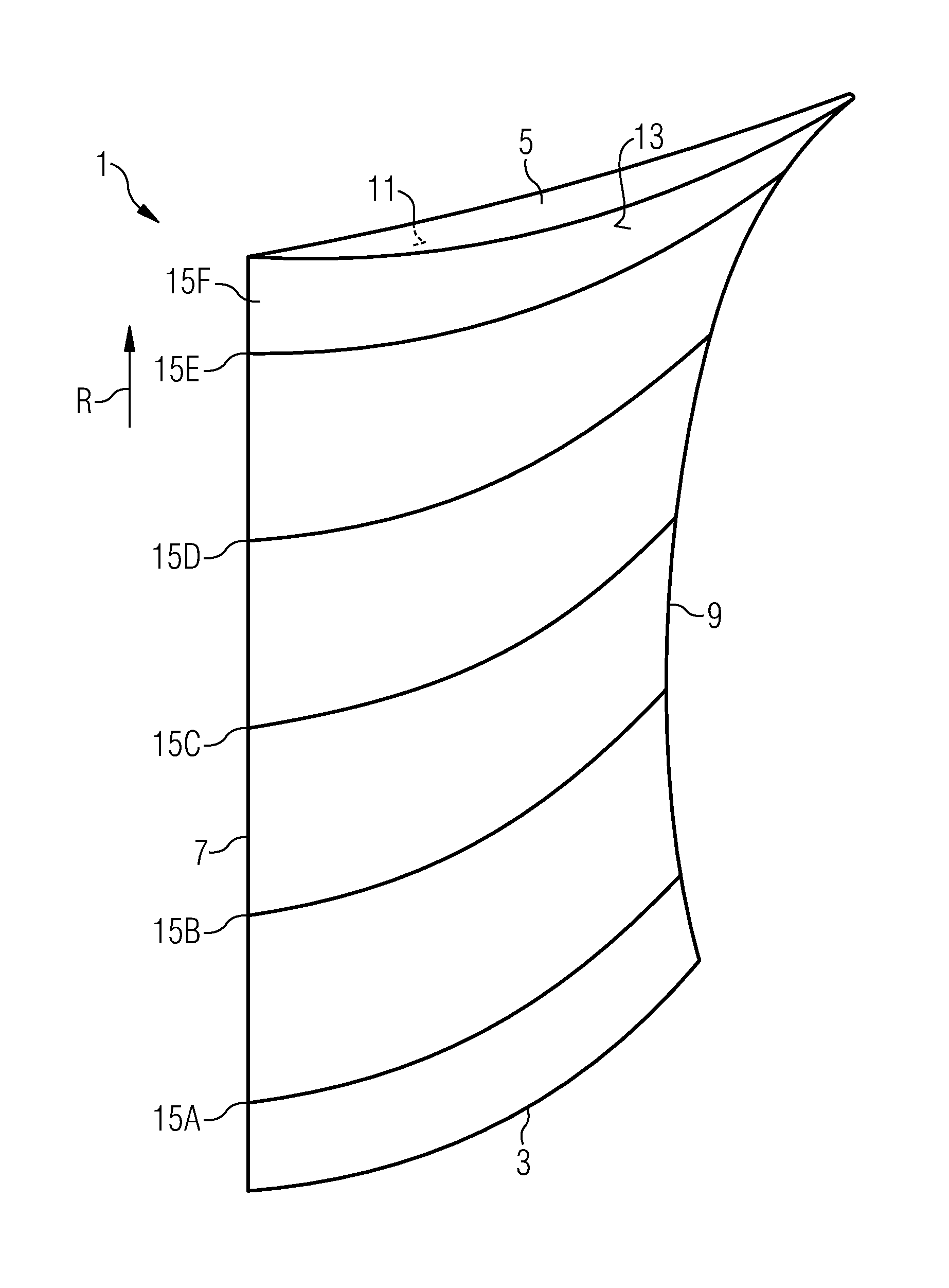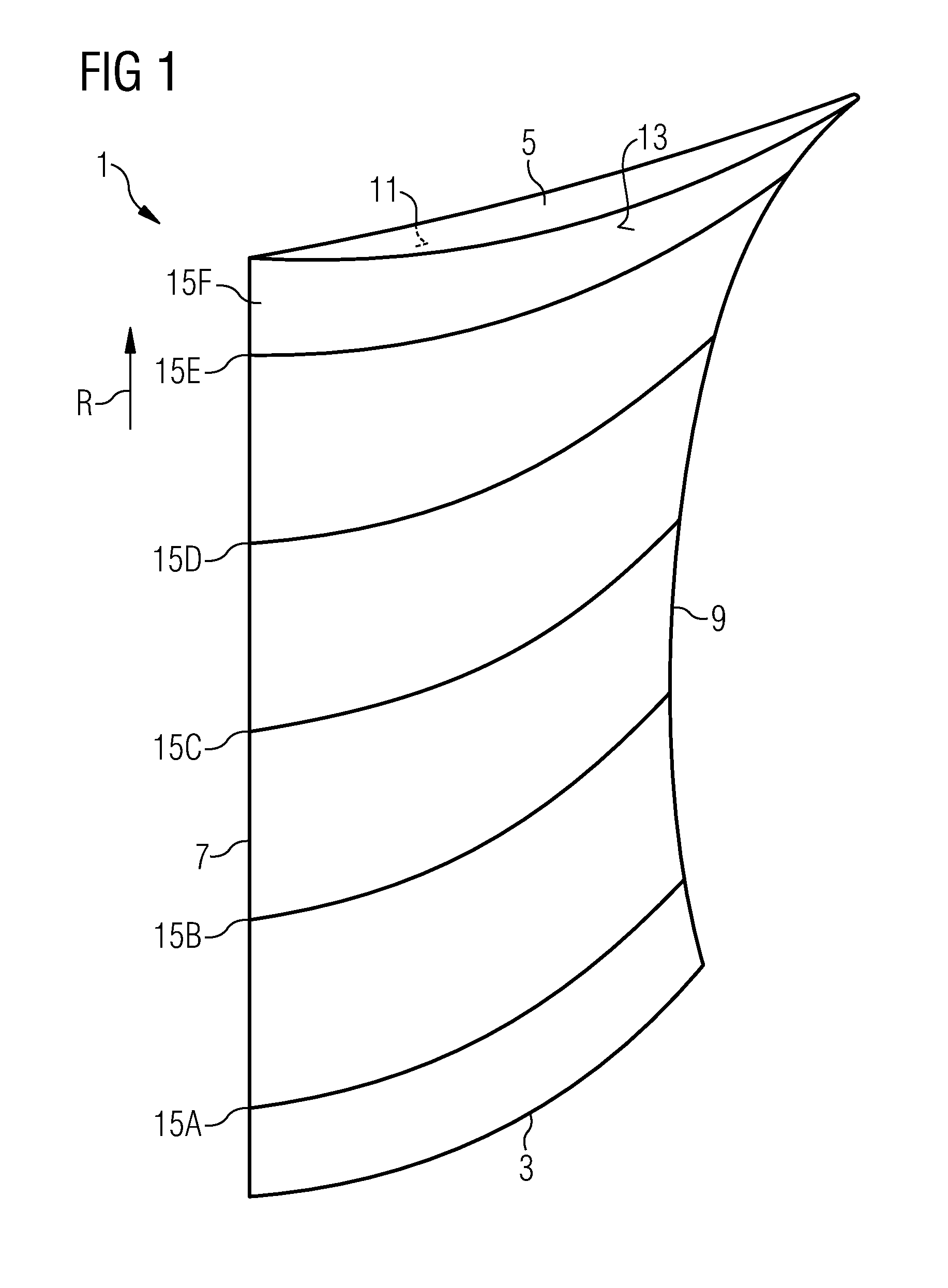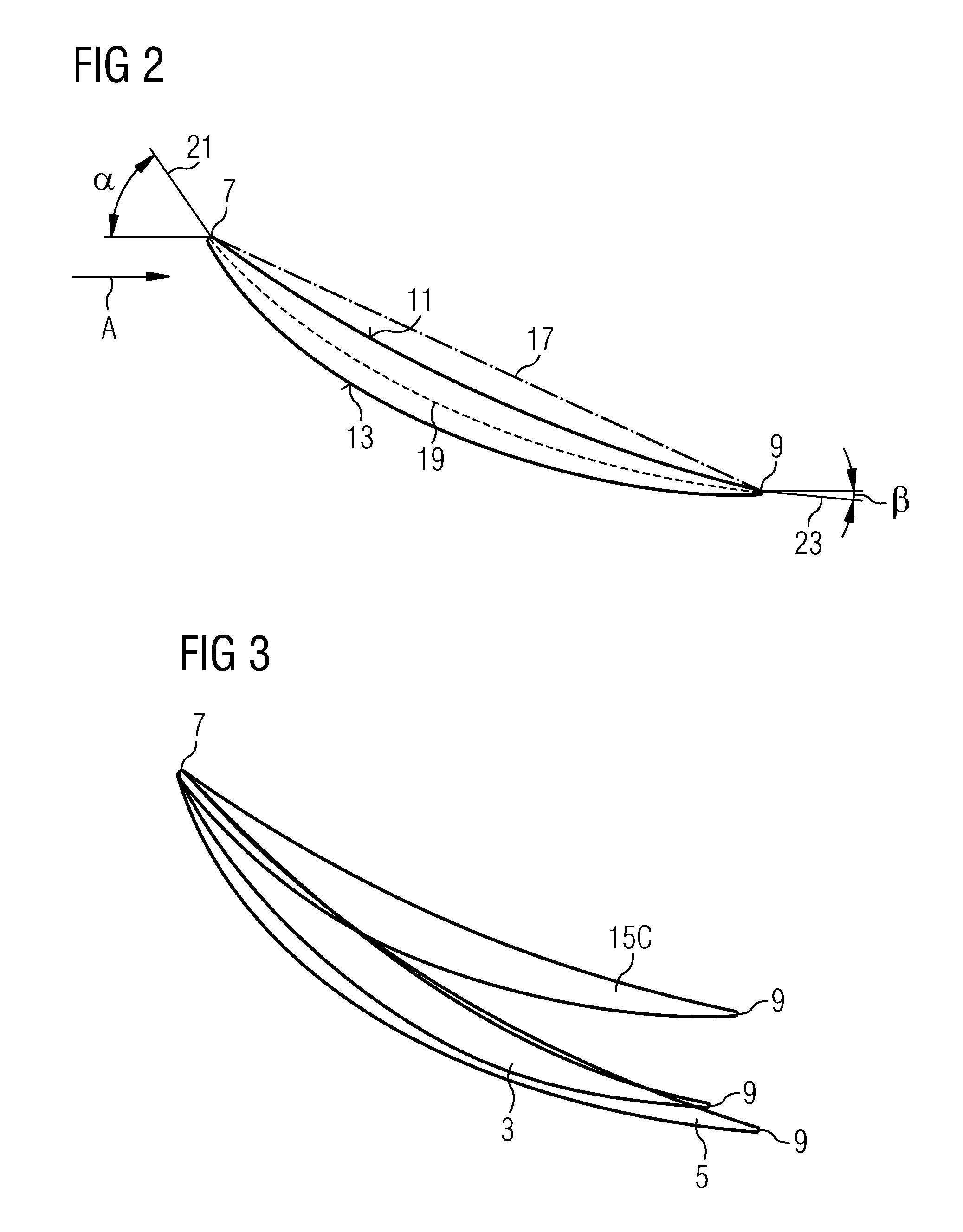Vane or blade for an axial flow compressor
a compressor and axial flow technology, applied in the direction of liquid fuel engines, marine propulsion, vessel construction, etc., can solve the problems of reducing limiting the pressure rise capability of the compressor, and increasing the stall margin usually, so as to reduce the loss of three-dimensional, improve the efficiency, and improve the performance of the compressor
- Summary
- Abstract
- Description
- Claims
- Application Information
AI Technical Summary
Benefits of technology
Problems solved by technology
Method used
Image
Examples
Embodiment Construction
[0031]An airfoil using the features of the invention is shown in FIG. 1 in a three-dimensional view. The features noticeable in FIG. 1 can, in general, be used for the airfoils of compressor rotor blades as well as the airfoils of compressor stator vanes.
[0032]The airfoil 1 comprises a hub section 3 which shows towards the rotor when the airfoil is incorporated in a compressor, and a casing section 5 which shows towards the compressor casing when the airfoil 1 is incorporated into a compressor. It further comprises a leading edge 7 and a trailing edge 9 which both extend from the hub section 3 to the casing section 5. While the leading edge follows a straight line extending in radial direction R of the compressor the trailing edge 9 is curved with respect to the radial direction of the compressor. The trailing edge 9 may, in addition, be curved with respect to the axial direction of the compressor, too. Between the leading edge 7 and the trailing edge 9 extends a pressure surface 11...
PUM
 Login to View More
Login to View More Abstract
Description
Claims
Application Information
 Login to View More
Login to View More - R&D
- Intellectual Property
- Life Sciences
- Materials
- Tech Scout
- Unparalleled Data Quality
- Higher Quality Content
- 60% Fewer Hallucinations
Browse by: Latest US Patents, China's latest patents, Technical Efficacy Thesaurus, Application Domain, Technology Topic, Popular Technical Reports.
© 2025 PatSnap. All rights reserved.Legal|Privacy policy|Modern Slavery Act Transparency Statement|Sitemap|About US| Contact US: help@patsnap.com



